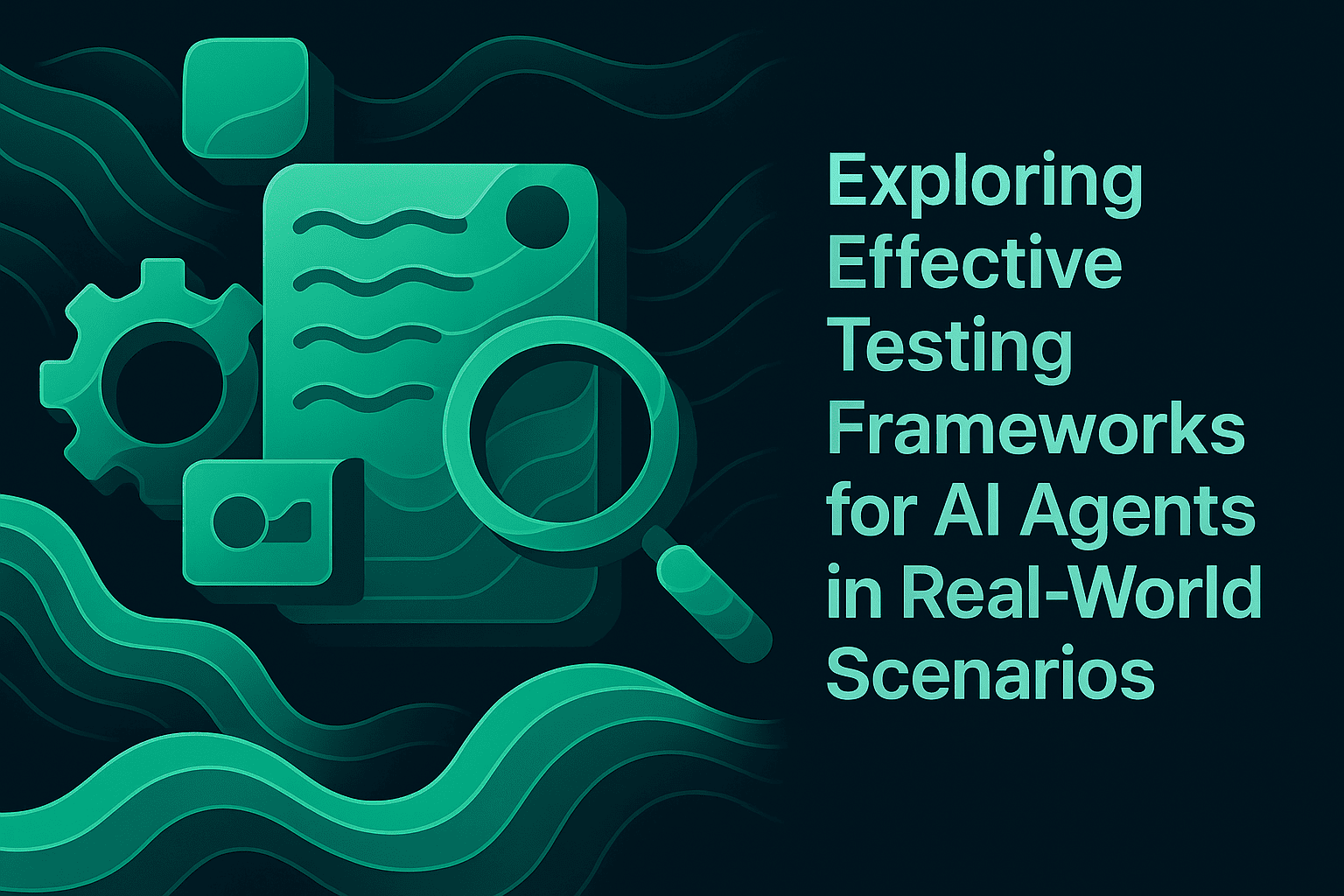Top 5 Agent Simulation Tools in 2025: What To Use, When, and Why

TL;DR
Simulate before you ship. That is the single rule every serious AI team ends up learning. Maxim AI gives you end to end simulation, evaluation, and production observability in one place. You can prototype crew patterns with CrewAI, replay and inspect chains with LangSmith, harden runs with AgentOps, and explore multi agent protocols with AutoGen.
Introduction
This guide explains how to compare agent simulation tools, what actually matters, and how to plug them into a reliable pre production loop with structured metrics and consistent iteration. Whether you are building a support agent, a planner executor setup, or a multi agent workflow, the right simulation stack will save you time, money, and a lot of guesswork.
If you want deeper coverage on scenarios, personas, evaluators, and consistent scoring, start with these Maxim resources:
- AI Agent Simulation: The Practical Playbook
- AI Agent Quality Evaluation
- AI Agent Evaluation Metrics
- Evaluation Workflows for AI Agents
- Agent Simulation and Evaluation
You can also book a demo at the bottom of the Maxim site if you want to see these workflows in action.
How To Evaluate Agent Simulation Platforms
Before choosing a tool, align on the factors that actually influence reliability. Teams often get distracted by features that look good on paper but do not move the needle. These are the criteria that consistently matter in real deployments.
Realism
You need simulations that mimic real conversations, not toy tests. That means personas, multi turn context, policy grounding, tools, and plausible user behavior.
Scale
A handful of test cases is never enough. You should be able to run hundreds or thousands of scenarios, compare versions, track drift, and keep datasets fresh.
Evaluators
A healthy stack needs evaluators for goal completion, correctness, safety, tone, tool use, and consistency across versions. Include latency and cost so you see tradeoffs clearly. Human review matters for subtle scoring.
Tracing
You cannot fix what you cannot see. Step by step traces help you pinpoint when an agent made a wrong assumption or misused a tool.
CI Integration
Your tests should run the moment a pull request lands. Merge gates catch regressions before they reach production.
Ownership and Control
Enterprises need privacy guarantees, audit logs, user roles, and deployment options that fit their security posture.
Time To Value
If it takes months to set up, it is the wrong tool. The ideal system gives you working signal in days.
These criteria form the backbone of the comparison below.
The Top 5 Agent Simulation Tools
Here are the platforms most teams rely on today, along with where each one fits in the workflow.
1. Maxim AI
What It Is
Maxim is a full platform for agent simulation, evaluation, observability, and ongoing quality monitoring. You define scenarios, personas, instructions, tools, and policies. Maxim runs multi turn simulations, scores them with balanced evaluators, supports human review, and lets you compare versions cleanly. The same metrics extend into production through online evaluations and alerts.
Key Resources
- Agent Simulation and Evaluation
- Evaluation Workflows
- AI Agent Quality Evaluation
- AI Agent Evaluation Metrics
- LLM Observability
Strengths
- Multi turn simulations with realistic personas
- Balanced evaluators including correctness, adherence, safety, tone, latency, and cost
- Human review pipelines for nuanced tasks
- CI automation through SDK and API
- Production monitoring that uses the same metrics as simulation
- Enterprise controls including in VPC deployment, SSO, SOC 2 Type II, RBAC, and collaboration
Ideal For
Teams that want simulation, scoring, and monitoring in one platform.
Pitfalls
- Vague scenarios produce noisy metrics
- Avoid relying on a single metric
- Treat expected steps as a contract
- Add human review for complex reasoning tasks
Quick Start
Pick three high value workflows, define personas, attach the tools you already use in production, set turn limits, enable evaluators, and run. Inspect traces, adjust prompts or tools, and re run. Connect to CI once you have stable baselines.
2. CrewAI
What It Is
A Python framework for building multi agent crews with explicit roles, tools, goals, and handoffs.
- Website: https://www.crewai.com
- Docs: https://docs.crewai.com
Strengths
- Clear role definitions
- Fast iteration on multi agent flows
- Easy scenario variations for tests
Ideal For
Teams exploring planner or researcher executor patterns.
Pitfalls
- Bring your own scoring harness
- Long tasks require guardrails and token limits
3. LangSmith
What It Is
LangChain’s platform for dataset based evaluations, replays, and tracing.
Strengths
- Dataset powered testing
- Strong tracing
- Clean replay support
Ideal For
Teams already invested in LangChain.
Pitfalls
- Not a full simulation environment
- Requires manual scoring for complex tasks
4. AgentOps
What It Is
A platform for run level analytics, guardrails, and failure inspections.
- Website: https://agentops.ai
- Docs: https://docs.agentops.ai
Strengths
- Fast visibility into patterns of failure
- Policy and safety checks baked in
- Replay capabilities
Ideal For
Teams focusing on reliability hardening.
Pitfalls
- Requires structured scenarios
- Evaluator depth is limited compared to full simulation platforms
5. AutoGen
What It Is
Microsoft’s open framework for multi agent collaboration and protocol design.
Strengths
- Flexible multi agent protocols
- Good for planning heavy or research workflows
- Strong tool invocation patterns
Pitfalls
- Unbounded chats burn tokens quickly
- Requires separate evaluators and CI integration
Comparison Table
| Tool | Best For | Strengths | Caveats | Links |
|---|---|---|---|---|
| Maxim AI | End to end simulation and observability | Multi turn sims, balanced evaluators, CI automation, production monitoring | Needs clear steps and balanced metrics | Product, Playbook, Metrics, Workflows |
| CrewAI | Crew patterns and handoffs | Role clarity, fast iteration | Bring your own scoring and guardrails | Site, Docs |
| LangSmith | Dataset replays and tracing | Strong tracing, dataset testing | Not a full simulation tool | Site, Docs |
| AgentOps | Failure analytics and safety checks | Clear failure visibility, guardrails | Requires structured scenarios and metrics | Site, Docs |
| AutoGen | Multi agent collaboration | Rich protocols, flexible tooling | Needs evaluators and CI integration | Site, Repo |
How Maxim AI Connects the Full Workflow
If you want your workflows to feel unified instead of managing multiple disconnected tools, Maxim provides:
- A simulation engine for multi turn, persona driven scenarios
- A structured evaluation suite with balanced scoring
- Human review flows for subjective or subtle tasks
- Dashboards for comparing versions and spotting regressions
- Production observability through traces, online evaluators, and alerts
- Enterprise features including in VPC deployment, SOC 2 Type II, and RBAC
Teams that use Maxim for simulation and monitoring get a single view of quality from pre production to real traffic.
Ready to accelerate your AI agent development cycle? Schedule a demo to see how Maxim AI can help your team ship reliable AI agents faster, or sign up today to start building with confidence.


